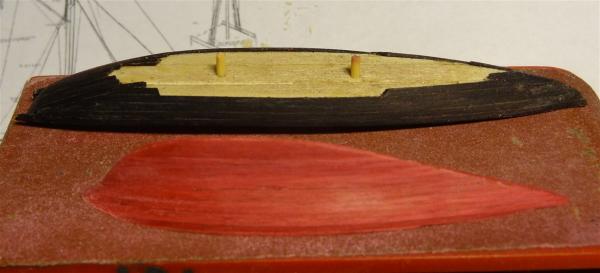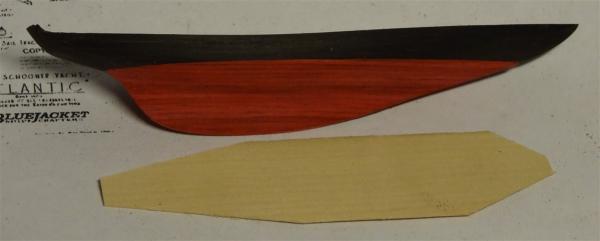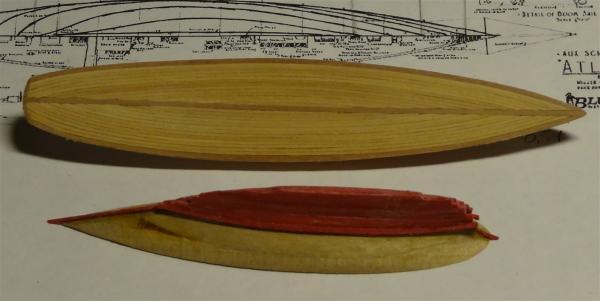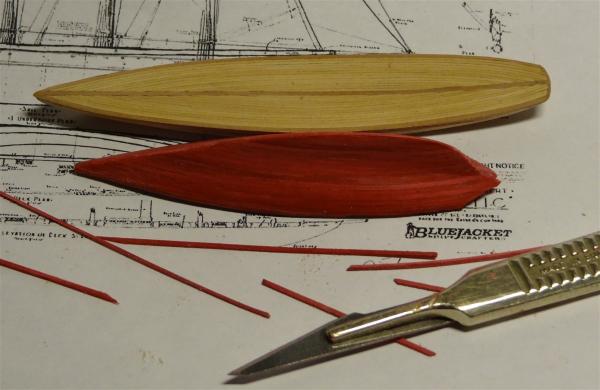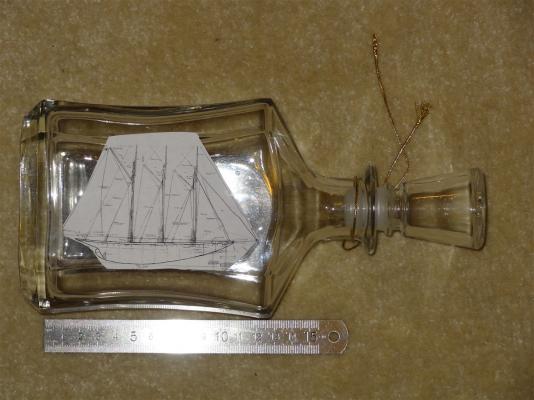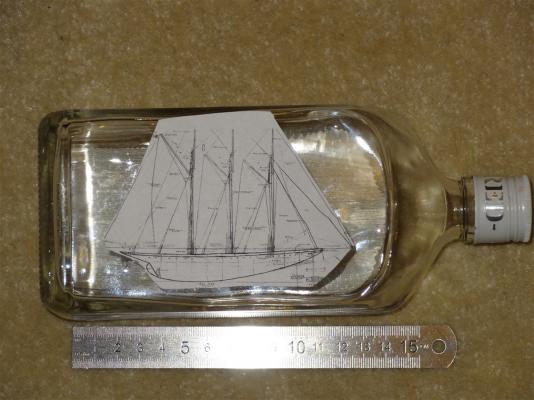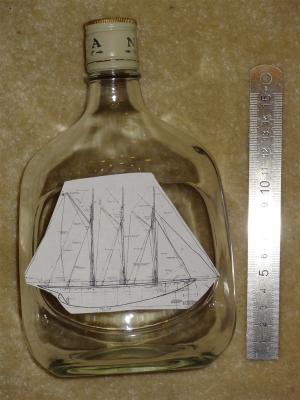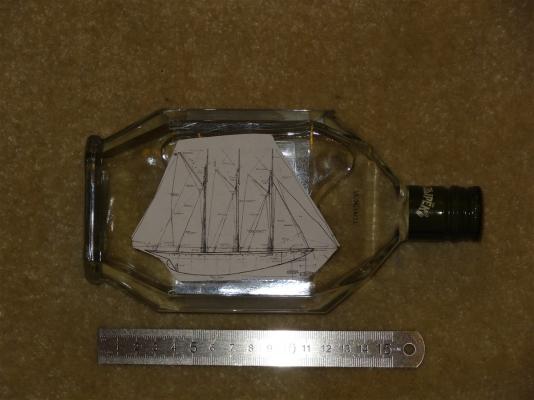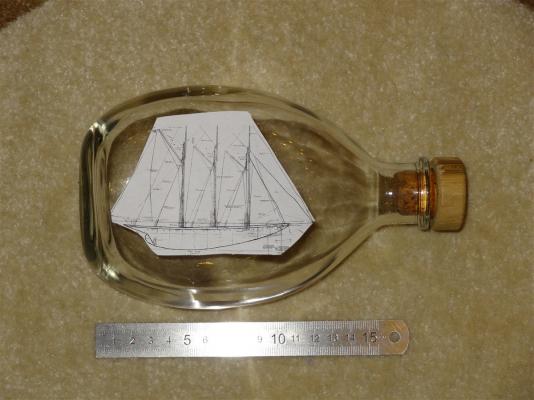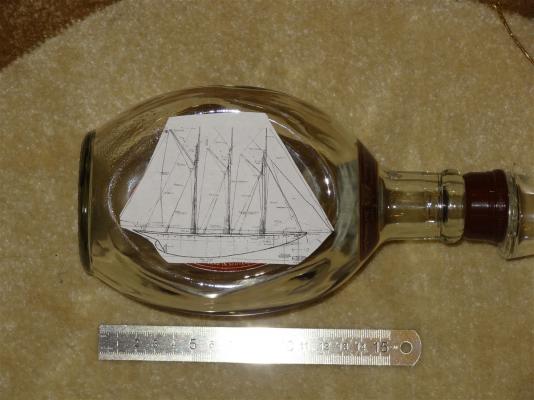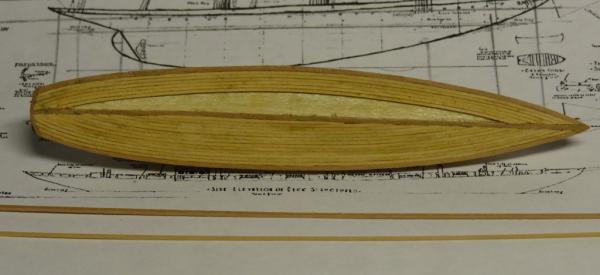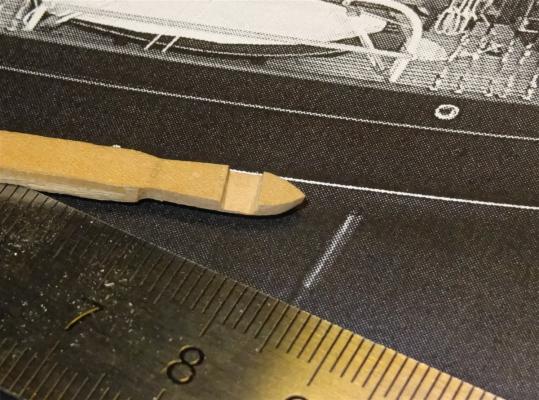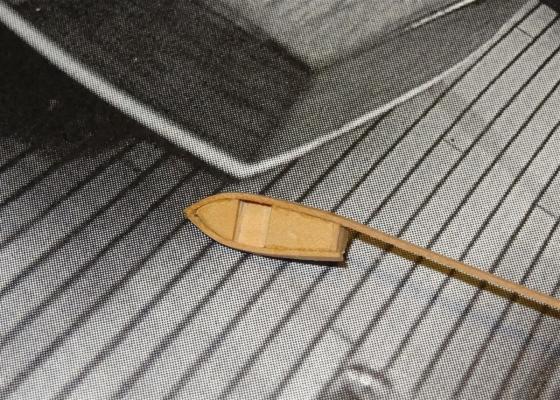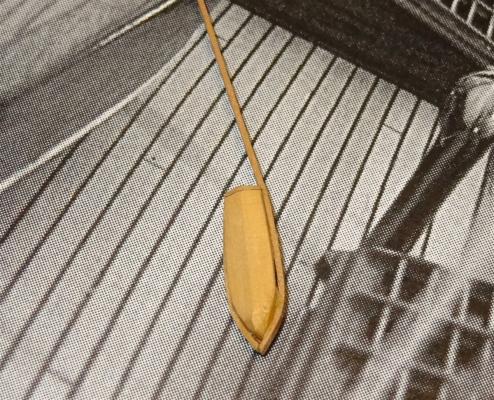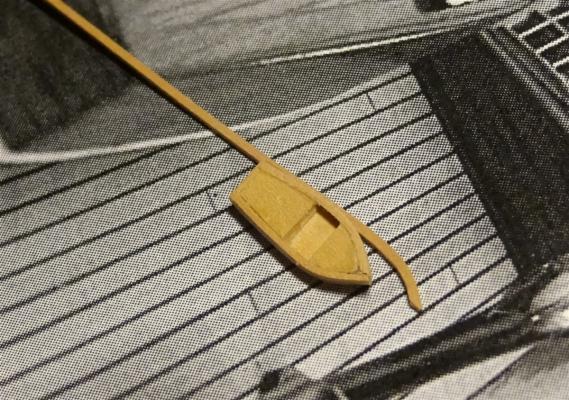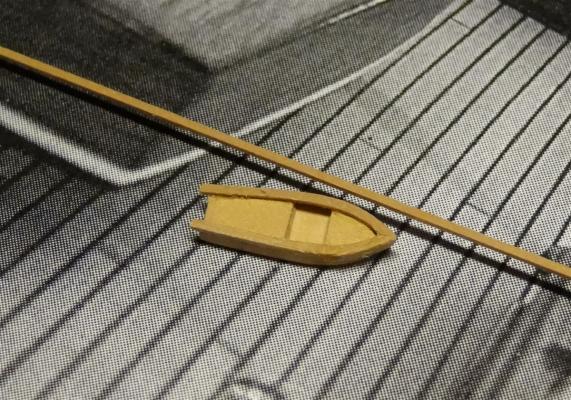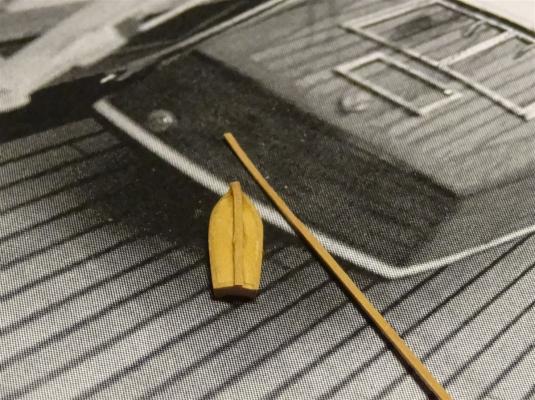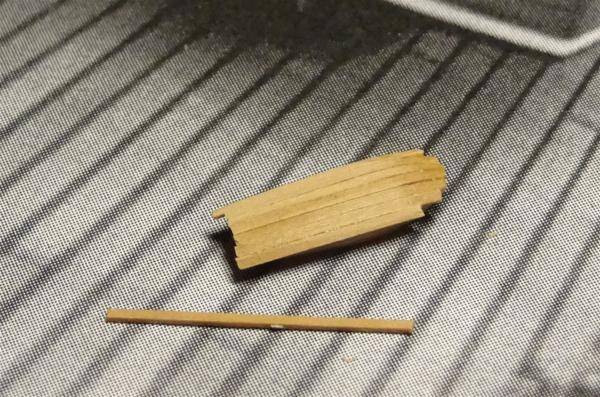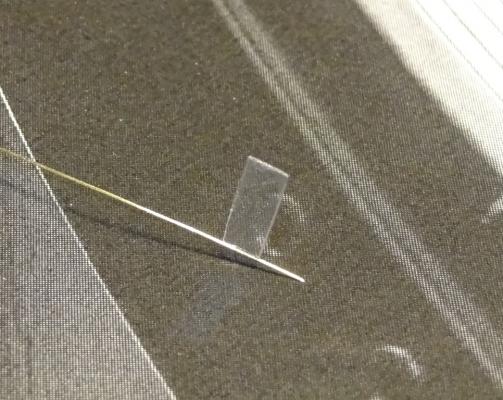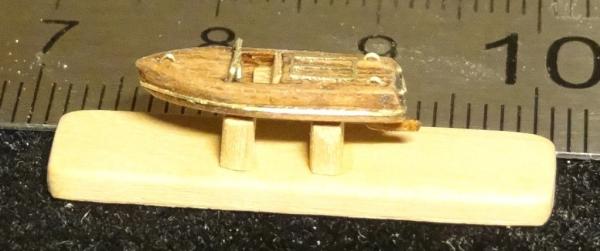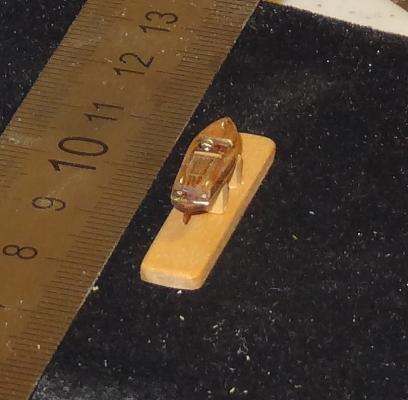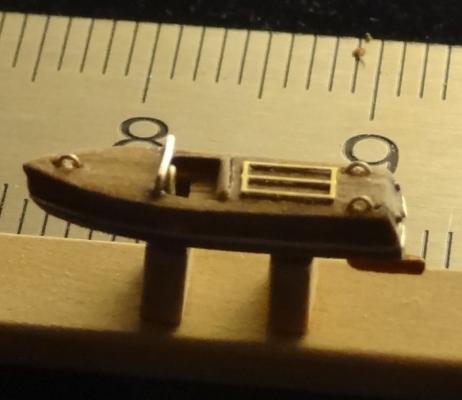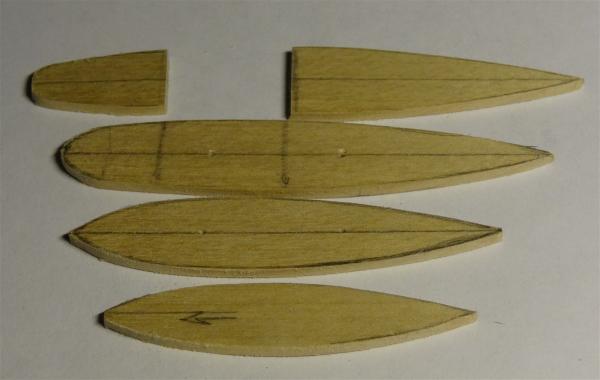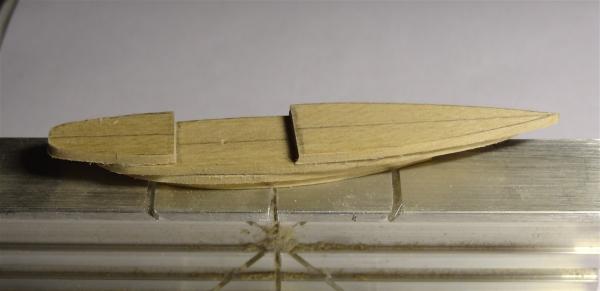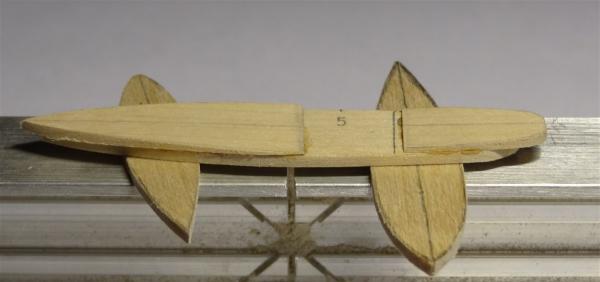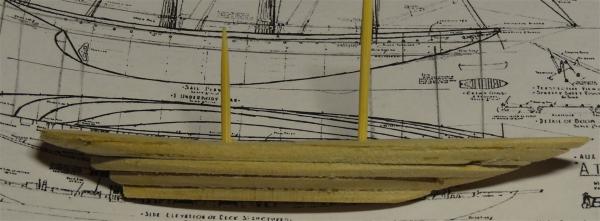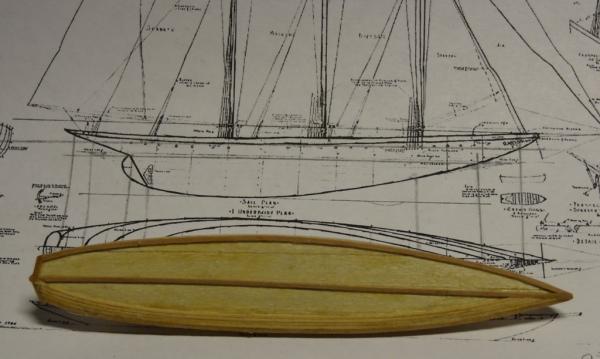
IgorSky
Members-
Posts
1,841 -
Joined
-
Last visited
Content Type
Profiles
Forums
Gallery
Events
Everything posted by IgorSky
-
The little progress yesterday. I have processed a thin layer of a waterline, have added on one lath 0,5 mm thick on each side of the hull. Now I need to process all hull finally. Sanding... sanding... sanding... slowly and carefully ))
-
Hi Lextin, It is excellent and it everything indeed is so. But, I think that at production of model in a bottle sometimes we can't precisely keep the scale for all details, but we can seek for observance of proportions and a harmony. Best Regards! Igor.
- 15 replies
-
- pacific princess
- bottle
-
(and 1 more)
Tagged with:
-
Hi Patrick, Thanks for the good words! Yes, this method allows to make easily and qualitatively the line of connection of the top and lower parts of the hull. And it is so simpler to join the planks of two different colour. By the way, Patrick, you was right - the hull should be placed in a bottle separately in parts)) Best Regards! Igor.
-
Hi David, You can see it here - http://northstarmodels.com/product-category/1700/ or to find distributors in USA - http://northstarmodels.com/where-to-buy/ Best Regards! Igor.
- 15 replies
-
- pacific princess
- bottle
-
(and 1 more)
Tagged with:
-
Hi Lextin, I think there are many producers of such details. I have bought some sets from Northstarmodels -
- 15 replies
-
- pacific princess
- bottle
-
(and 1 more)
Tagged with:
-
You can see that the top belt of a covering of the hull is 0,4 mm lower than the line of the deck. It is necessary to paste then a false board 1,2 mm wide.
-
Hi Lextin, very nice model. My congratulations! I think you can use the photoetched detailes for models with scale 1/350, 1/600 or 1/700. Now there is a wide choice of such sets and it is possible to choose details necessary for your models, such as anchor chains, railings, lifebuoys, windows and many others. Best Regards! Igor.
- 15 replies
-
- pacific princess
- bottle
-
(and 1 more)
Tagged with:
-
Thanks hexnut. Yes, a bottle 5 too quite good option, but I now have no wood to make a support for a bottle.
-
Hi Patrick, The hull of this model passes in a bottle throat entirely, but to have some reserve it is always well. There will be the third part of the hull - a thin layer at the level of a waterline. It is much simpler to do planking of the hull when it is made of two parts. A little later I will show it on a photo. Besides, I didn't think of the scheme of conducting of a rigging yet. And perhaps I will need the separate parts of the hull for this purpose too. Best Regards! Igor.
-
Hi Patrick, Yes, most likely it will be a bottle 3. Now I need to check more carefully the internal sizes of a bottle and the external sizes of model. Best Regards! Igor.
-
About the choice of the bottle… So, though to the end of construction there is a lot of time, but it is already necessary to make a final choice of a bottle for model. I consider 6 bottles which I can use for this model. The bottle 4 is still filled with vodka therefore I exclude it from the list)). The sizes of a bottle 2 leave not enough space for a support. Bottle 5 … It seems to me that the form of this bottle more is suitable for model of the old sailing ship. Bottle 1 … I have some ideas about a stopper of this bottle, but I am still not ready to carry out them. So, there are only 2 bottles for a choice… They are pleasant to me both, but the bottle 3 is verticall, and the bottle 6 is horizontal. Besides, I am going to use the bottle 6 for one of my next projects – schooners SIR WINSTON CHURCHILL. So, the choice is almost made)) Bottle 1 Bottle 2 Bottle 3 Bottle 4 Bottle 5 Bottle 6
-
Hi Patrick, I have some suitable bottles, but I didn't make a final choice yet. I will show bottles a little later. Best Regards! Igor.
-
The planking of the deck I used for planking of the desk the planks of light pear (thickness 0.5 mm and width 0.5 mm) and the planks of pink pear (thickness 0.5 mm and width 0.8 mm).
-
Hi Patrick, Thanks for greetings! I am going to build full-hulled model. I thought about variant of the waterline hull with setting in a moulded sea. But its underwater part is too fine to hide it under water))
-
I tried to make one of boats for the Atlantic, but it turned out 4-5 mm longer, than it is necessary for me ((:
-
I begin. I have not too good drawing of this schooner, but I have found some photos of its and some photos of its models. The initial stages of construction doesn't present a particular interest, but here you can see some photos:
-
ATLANTIC history Commissioned by New York Yacht Club member Wilson Marshall, Atlantic was launched in 1903. She was designed by William Gardner, one of America's foremost designers of large yachts. From the moment Atlantic went to sea, it was clear that she was an exceptionally fast and beautiful schooner. When a yacht in 1903 hits twenty knots during her sea trials, she is a promising yacht, but even then nobody could imagine two years later this yacht would set a record that would stand unmatched for almost a century. Nevertheless, whilst Wilson Marshall wanted Atlantic to be the fastest schooner on the water, he felt there was no reason to compromise on comfort. Unlike contemporary racing schooners, Atlantic was equipped with every imaginable luxury. Fitted out with the finest mahogany panelling, she had two steam driven generators to power electric lights, refrigerators and a large galley. On deck her halyard winches and primary sheet winches were also steam driven. She had two double and three single staterooms, a lobby, a large full beam saloon, a dining room, a chart & gunroom, three large bathrooms and in the deckhouse there was a comfortable observation room. She had retractable chimneys, so while under sail the below deck steam heating, lighting and refrigeration systems could keep running. Atlantic's fo'c'sle accommodated her thirty-nine strong crew and officers, who would live aboard throughout the year. During her first season Atlantic proved fast, winning both the Brenton Reef and the Cape May Cup hands down, but it was only in 1905 she made the headlines by winning the Kaiser's Cup, a Transatlantic race from Sandy Hook to the Lizard. Referred to as "The last Great race of Princes" the entries for this race included all the yachts that the rich and powerful from Britain and America could send to sea. The legendary Captain Charlie Barr, who had already successfully defended the America's Cup three times, was hired to skipper Atlantic. Charlie Barr's determination to win was as legendary as his skills for driving the largest of yachts to the very limit. And win, he did, sailing 3006 miles in 12 days, 4 hours, 1 minute and 19 seconds. Atlantic's 24-hour record was 341 miles, an average speed of 14,1 knots. Uncountable attempts were made to break this record but it would hold firm until 1998, the longest standing speed record in the history of yachting. Atlantic's story continued for another seventy-seven years with ownership passing through the likes of Cornelius van der Bilt and Gerald Lambert. She was used as a mother ship for other racing yachts like Vanity, for America's Cup defenders and the J-Class Yankee on her voyage to England. Her guest book included the rich and famous of the world. Simply put, she is the most famous and beloved racing schooner of all time. Although after World War II Atlantic would never sail again, she refused to give up her existence. Somehow she was saved from the scrap yard on three different occasions, broke loose from her moorings, to sail back to sea without a man aboard and ended up used as a houseboat, a restaurant and a floating dock at a fuel station. Finally on 30th of January 1982, she was broken up at Newport News Boat Harbor, Virginia. The Schooner Atlantic's General Specifications Design William Gardner Year Originally Built 1903 Length on Deck 185 Feet 56.43 Meters Waterline Length 135 Feet 41.18 Meters Beam 29 Feet 8.85 Meters Draught 16½ Feet 4.9 Meters Displacement 298 Tons 303 Tonnes Sail Area to Windward 18,500 Feet² 1,750 M² This information from the site www.schooner-atlantic.com So, I decided to construct model of this surprising schooner in a bottle.
About us
Modelshipworld - Advancing Ship Modeling through Research
SSL Secured
Your security is important for us so this Website is SSL-Secured
NRG Mailing Address
Nautical Research Guild
237 South Lincoln Street
Westmont IL, 60559-1917
Model Ship World ® and the MSW logo are Registered Trademarks, and belong to the Nautical Research Guild (United States Patent and Trademark Office: No. 6,929,264 & No. 6,929,274, registered Dec. 20, 2022)
Helpful Links
About the NRG
If you enjoy building ship models that are historically accurate as well as beautiful, then The Nautical Research Guild (NRG) is just right for you.
The Guild is a non-profit educational organization whose mission is to “Advance Ship Modeling Through Research”. We provide support to our members in their efforts to raise the quality of their model ships.
The Nautical Research Guild has published our world-renowned quarterly magazine, The Nautical Research Journal, since 1955. The pages of the Journal are full of articles by accomplished ship modelers who show you how they create those exquisite details on their models, and by maritime historians who show you the correct details to build. The Journal is available in both print and digital editions. Go to the NRG web site (www.thenrg.org) to download a complimentary digital copy of the Journal. The NRG also publishes plan sets, books and compilations of back issues of the Journal and the former Ships in Scale and Model Ship Builder magazines.





